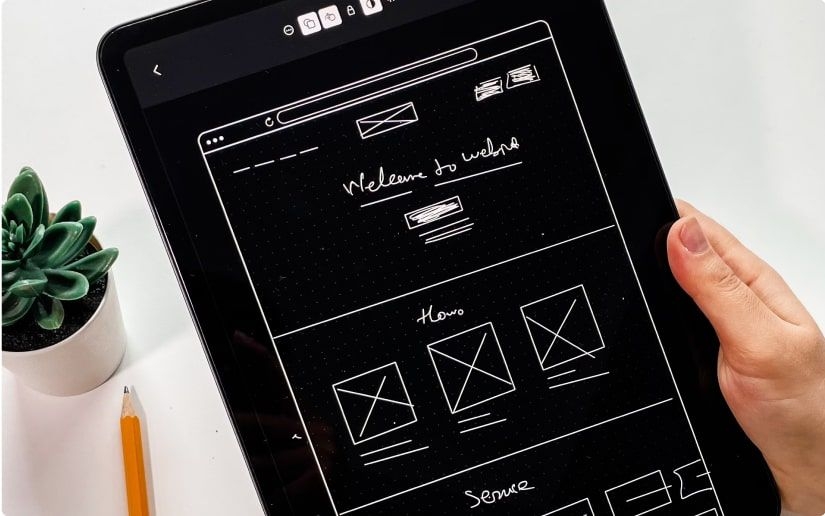Although minimum viable product (MVP) is quite popular on the market, no one is immune to mistakes. When you are planning to build an MVP, various MVP mistakes may arise at various stages of development, impairing further development.
However, understanding the mistake is the first step to solving it. Considering that the power is in knowledge, let’s overview the most common MVP mistakes you may witness.

Ignoring feedback
One of MVP’s main missions is to gather feedback, and neglecting it is a serious issue. Not paying attention to users’ opinions about the product leads to overlooking crucial improvements and potential opportunities for refinement. It can result in a product that cannot connect with users.
The solution to this issue is straightforward, though. Keep in mind that feedback is crucial. Analyze it and establish a feedback loop for continuous improvement. Engage with users through surveys, interviews, and analytics to gain valuable insights for refining the MVP. Create a responsive system that prioritizes user input, as depicted below.

Ignoring market research
Some of the most widespread mistakes when developing an MVP are about market research. Overlooking market trends and needs can lead to the development of an irrelevant product that struggles to find its place in the market. It may lead to mere resource waste and the absence of opportunities.
To avoid such an outcome, conduct thorough market research to identify target audience preferences, competitors, and emerging trends. Use the findings to guide the MVP development services, ensuring it address actual market demands. Regularly update market research to stay adaptable to changing conditions.
Building a product you can’t sell
Creating a product without considering market demand and sales potential may result in a solution that lacks a market fit. It poses a significant risk to the business viability of the product.
Hence, before creating an MVP, validate the market demand. Incorporate features that solve a genuine problem for users, aligning the product with market needs. Develop a scalable business model that ensures long-term viability. Regularly reassess the product’s alignment with market demand.
Overbuilding your MVP
Including excessive features that delay development and increase costs can hinder the MVP’s speed to market and compromise its essential functionality.
Keep in mind that minimum viable products prioritize features based on essential functionalities, addressing core user needs. Adopt an incremental approach, releasing a minimal but functional version to gather user feedback for subsequent improvements. Emphasize a lean and agile development methodology.
Read also: Why You Need MVP Startup Software Development: 5 Key Benefits in 2024
An over-engineered MVP
Another one of MVP mistakes is about overcomplicating the MVP with unnecessary technical complexities. Such an approach may lead to significantly higher development expenses and delayed time-to-market.
To avoid it, focus on simplicity and functionality. Omit unnecessary technical intricacies that do not directly contribute to the core purpose of the MVP. Keep the development streamlined to accelerate the time-to-market. Prioritize an efficient and straightforward architecture.

Lack of prototyping
Each MVP includes some form of prototype for a reason, and the lack of it is one of the most critical mistakes during MVP development. Creating a product without prototyping can result in unexpected design issues and a product that doesn’t meet user expectations.
To avoid this issue, create MVP prototypes to visualize the user interface and experience early in the development process. Prototyping allows for user testing, refining design elements, and ensuring a more user-friendly product. Here’s a prototype example made by our team at Codica.

Too much feedback
Surely, MVP gets created to gather feedback, yet being overwhelmed with it can be challenging to make informed decisions. It can lead to decision paralysis and slow down the development process.
A structured feedback management system may help mitigate this issue. Categorize feedback based on priority and impact. Regularly review and address high-priority feedback to maintain focus on essential improvements. Establish clear criteria for prioritizing feedback.
Inadequate development method
Choosing an inappropriate development method can hinder progress and result in inefficient collaboration.
Select an agile development methodology tailored to the project’s nature. Agile allows for iterative development, continuous adaptation to changes, and regular reassessment of priorities, enhancing the project’s flexibility and responsiveness. Nurture an open communication environment and foster a sense of collaboration within the development team.

Choosing the wrong development team
Picking an inexperienced or incompatible development team impacts quality and can lead to misunderstandings and delays.
Thoroughly vet potential development teams. Assess their expertise, experience, and compatibility with the project’s goals. Put emphasis on effective communication to ensure a seamless development process. Consider past projects and client testimonials when evaluating the team’s capabilities.

Not defining the target audience
Failing to identify and understand the target audience can lead to a misaligned product that doesn’t resonate with potential users, although it is one of the most important aspects of MVP.
To solve this, conduct market segmentation and define the characteristics of your future customers. Tailor the MVP to meet the preferences of the identified audience, ensuring better alignment with market expectations. Create buyer/user personas by researching their average income, gender, age, and other metrics. Then, continuously update the target audience definition based on user feedback and market changes.

Not focusing on user experience
Although MVP features limited functionality and design, neglecting user experience diminishes the product’s overall appeal and can result in a higher user churn rate.
To avoid churn because of poor user experience, conduct testing, gather feedback on user interactions, and iterate on the design to create an intuitive and satisfying product. Consistently refine the user experience according to users’ desires and ever-changing design trends. Implement a user-centered design approach throughout the development lifecycle.
You may also like: MVP Testing: Techniques, Strategies, and Plan
Creating the ideal MVP
Essentially, creating the ideal MVP is not an impossible task. Here are a few tips on how to make the most out of it.

- Emphasize user-centric design to ensure the product addresses real user needs.
- Stay updated on evolving trends and user expectations through ongoing market research.
- Create a strong feedback loop to gather, analyze, and prioritize user feedback for continuous improvements.
- Adopt an iterative development approach, releasing incremental updates based on user feedback and evolving market dynamics.
- Regularly reassess the product-market fit, making strategic adjustments to align the MVP with current market demands.
Keep in mind that making MVP mistakes is an inevitable part of the process, yet having knowledge in the field can greatly reduce the chance of making them. With a reliable IT partner, you can minimize this chance even more, so feel free to contact us to get a quote. In the meantime, make sure to check our blog, where we regularly cover all possible intricacies of the software development world.





